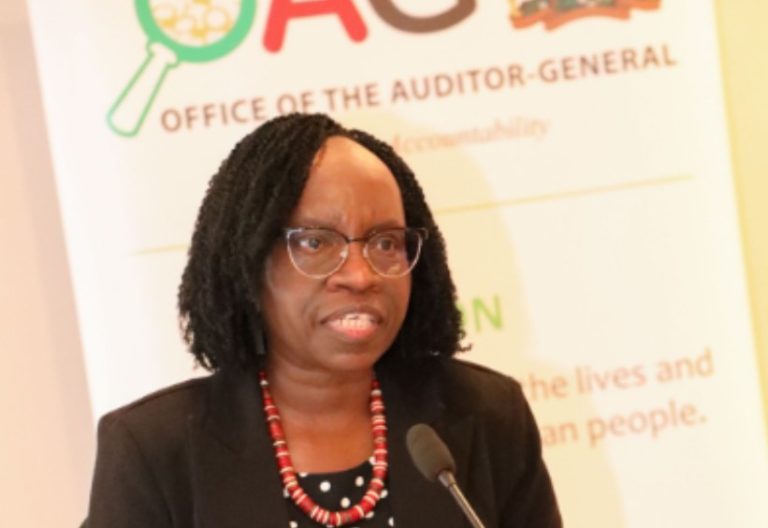Did rising prices trigger protests?

In a move that shocked observers, Kenya’s President William Ruto announced on June 26 he was withdrawing his government’s highly controversial Finance Bill. This followed two days in which tens of thousands of mostly young protesters took to the streets in nationwide rallies against the proposals contained in the country’s 2024 budget. Kathleen Klaus, who has studied political violence in Kenya, unpacks what drove the protesters.
Sharp rise in livelihood goods, especially food and fuel, often serves as a trigger for protest and social unrest. This has been documented by several academic studies.
There are numerous recent examples, from the protests in Tunisia that sparked the Arab spring, to the uprisings in Chile, South Africa and France.
Yet like elsewhere, rising prices – and prospects of even higher costs – are only part of the story in Kenya. What seems to have motivated such widespread outrage and collective action relates to four key issues.
First, what is being taxed matters, both materially and symbolically. The proposed taxes would have affected every segment of society. But they would have been most keenly felt by poor and working-class people. The Bill proposed taxing everything from income and fuel to essential items like eggs, sanitary napkins and disposable diapers – though amendments have removed taxes on sanitary napkins and disposable diapers.
Digital content targeted
The proposed tax increases were also set to increase healthcare costs. Digital content creators would also have been affected.
The increased tax on these most intimate and essential items represents the government’s indifference toward Kenyans’ ability to live a dignified life.
Second, the government has justified the tax as a way to pay down the national debt, which currently stands at 68 per cent of the GDP. Yet, for many Kenyans, addressing the deficit hinges not on taxation, but on addressing rampant corruption at every level of government, financial mismanagement and lavish consumption among political elites.
This includes a deepening sense of outrage at Ruto’s spending habits – such as hiring private jets for global trips, an eight-course dinner for King Charles III and a love of expensive watches and other designer goods.
Third, many Kenyans felt that the Finance Bill, which was passed with support of 195 out of 304 members of parliament on 25 June, completely disregarded their humanity.
In their view it also showed an inability or refusal by political elites to recognise the economic precarity, grinding poverty and everyday struggle that many experience.
As one woman, quoted in the New York Times, explained: “It’s like (politicians) aren’t feeling our pain.”
In addition, the Finance Bill felt like betrayal for the people who voted for Ruto in the 2022 elections based on his appeals to the poor as well as promises of progressive taxation.
Fourth, protesters were also motivated by the government’s brutal attempt to repress the uprising. The resolve of many protesters deepened as the police and military became more violent – reportedly shooting live bullets and tear gas into crowds. At least 13 people were reported to have been killed.
The narrative and messaging shifted in response to the state’s violence. The rallying call turned to marching for freedom and honouring Kenyans killed by the police.
What long-standing and unresolved issues are behind the unrest?
Several underlying and unresolved issues help explain the power and scale of the anti-tax protests.
The first, as mentioned previously, is a long history of the government’s disregard for Kenyan lives. Numerous social movements have captured this sentiment, especially over social media.
These have ranged across; anger over impunity for police repression failure to address gender-based violence unpreparedness and slow response during national emergencies such as the devastating floods in April, which killed over 291 people, and the willingness of politicians to stoke ethnic divisions and encourage violence for their own political gain.
High profile corruption
A second and related issue is the perceived greed of the political class, including decades of high-profile corruption scandals that go largely unchecked – scandals that exacerbate national debt, but also deny Kenyans critical and promised infrastructure upgrades and improved service delivery.
This issue is compounded by long-standing frustration with the (mis)management of public funds, and the inability of Kenyans to hold their leaders accountable.
These frustrations are coupled with enduring and profound economic inequality, rooted in settler colonial rule, which rendered much of the population landless. To this day, just a few Kenyan families own a vast share of the country’s arable land. In 2022, the richest 10 per cent of Kenyans owned 48.5 per cent of the nation’s wealth.
Persistent inequality, which increased slightly between 2020 and 2021 has also slowed poverty reduction rates, with the poverty rate increasing by nearly 7 per cent between 2015 and 2021.
What about economic consequences?
The protests signalled to the government and international lenders alike, that there is little tolerance and political space for raising revenue through regressive taxes – those that place a higher burden on low-income rather than high-income earners.
Equally, it signals a growing public intolerance of corruption.
Finally, that the protests persuaded Ruto to withdraw the Finance Bill signals an empowered and emboldened civil society – one that may be able to continue pushing for greater financial transparency and accountability from their leaders. While dramatic change is unlikely, the prospects of widespread unrest may compel political leaders to be more attuned to the public interest, a shift that could eventually lead to more inclusive economic policies.











